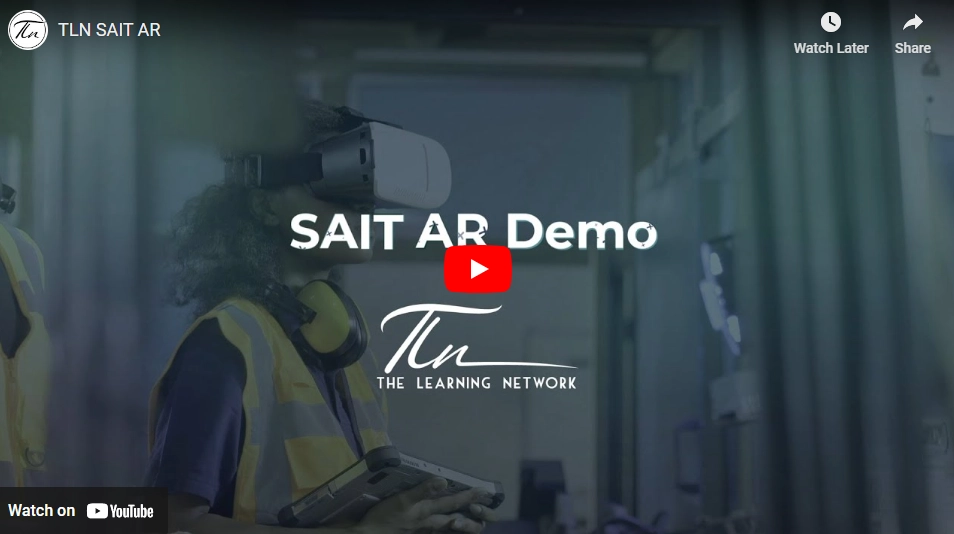
SAIT partnered with Alberta schools, seeking to create an immersive media experience for Grade 7 to 9 students to explore and embrace skilled trades. SAIT was recently awarded funding and aimed to launch by the start of the 2024 school year.
The initiative emerged after findings suggested the need to educate youth on skilled trades and the benefits of apprenticeships for career success.
The program needed to align with and enhance existing school career studies curricula and learning objectives while addressing various competencies. It had to teach students about skilled trades career paths and encourage their independent career journeys. Thus, the following objectives were articulated:
- Raise awareness about skilled trades as viable careers, emphasizing financial and educational aspects.
- Introduce entry pathways addressing adjacent fields of work and highlighting the cultural significance of skilled trades.
- Foster skills, knowledge, and attitudes required and address stigmas.
- Illuminate the impact of skilled trades on society, including shaping culture and technological advancement.
- Empower students to communicate with educators, parents, and advisors for academic and certification guidance.
SAIT partnered with TLN on previous courses related to the skilled trades, notably the eTrades program, so we were a prime choice for a partner to assist in completing the work.
Based on discussions with subject matter experts, we proposed three modules. Modules 1, 2, and 3 were intended for Grades 7, 8, and 9 respectively, but could be completed at any time.
- Module 1 – What Is a Skilled Trade?
- Students take their first steps to understanding opportunities available through skilled trades and apprenticeships.
- Module 2 – Skilled Trades and My Career Interests
- Students discover how their own skills and interests help them begin career exploration.
- Module 3 – Starting the Skilled Trades Journey
- Students take steps towards learning about rewarding careers in skilled trades.
The goal was also to build learners’ competencies using multiple modalities in each module. After all, as an optional curriculum, learners may not take all three.
Part 1 takes place in the classroom. Face-to-face small- and whole-group task-based activities build a foundation for students to confidently develop their skills in the online portion. Tied to their existing career studies curriculum, these sessions further connected their existing knowledge with skilled trades and apprenticeship.
Online learning is used for Parts 2 and 3 to promote learner autonomy as they apply Part 1 foundational knowledge to their individual skills and interests. Learners may share their individual learning journeys with peers and teachers, reinforcing their learning.
We used Articulate Rise to maximize interactivity where it matters most, while TLN’s Breaze platform allows learners to easily access learning journey steps. Breaze is also a user-friendly tool allowing SAIT students and teachers to track progress. Additional worksheets for independent learning activities allow for easy completion and submission to the teacher.
We focused on three key themes:
- Foster learning by doing (task-based learning):
- Hands-on in-class and at-home activities promote exploration. For example, learners select a challenge activity, gather household materials, and utilize specific skilled trades competencies they’re interested in.
- End of module expressive tasks ensure meaningful synthesis of learned material with learners’ career interests. For instance, students learn to create an engaging video, audio recording, or other product to showcase their new-found skills.
- Meet students where they are:
- Build fluency with public resources. Vocabulary and listening activities scaffold to understanding Alberta’s Alis and TradeSecrets videos.
- Draw on personal experiences. Scenarios are situated in real-world settings like studying with friends or planning a birthday.
- Connect to the curriculum. Students can self-assess key activities to understand success and monitor their progress, while activities align with the school’s career studies curriculum objectives and rubrics.
- Inspire:
- Introduce exciting examples. Engaging imagery, videos, and scenarios highlight skilled trades opportunities and build enthusiasm.
- Feature diversity. We use inclusive imagery and video testimonials so learners can see themselves in skilled trades and apprenticeship programs.
We successfully pivoted and embraced an agile approach mid-project. The two learning experts became lead developers, successfully ensuring continuity in the learning experience between platforms, both functionally and in terms of learning. The agile approach to client feedback also supported a successful final product.
As a learning company focused on digital solutions, we pushed boundaries by using digital solutions to ensure engagement and smooth transitions between face-to-face and autonomous online learning through task-based activities, scaffolding, and visuals.
Feedback
SAIT is enthusiastic about the project’s success as it plays a key role in their goals of supporting young people. They have already mentioned further partnerships on this and related initiatives.
SAIT has invited project team members to attend Apprenticeship Day. This will be used to launch this program and showcase what we’ve built.
Leave a comment
You must be logged in to post a comment.

